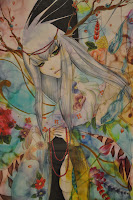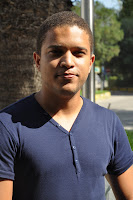(...)
As I was walking around the area dedicated to the various Asian Deities I fell almost immediately for the puppets representing some of them, though I photographed quite a few artefacts. Apart from having always loved puppets on strings, these particular ones seemed very fine, expressive ... almost human-like and I couldn't help admiring their facial expressions, their outfits and the Art beyond their religious representation.
Fujian, Chinese puppets on strings (to perform opera) featuring the Deity Guanyin, the Goddess of compassion said to be one of the most venerated Goddesses in the whole of China (seen above) and her assistants - Shancai and the daughter of the Dragon King.

A clay statuette from Hong Kong, China representing Tudi Cong, the God of the Sun, who protects each village.

Each of the ten courts of the Hells the deceased must cross is specialised in a particular type of fault. The assumption of guilt implies a punishment. Any lies are shown in a mirror in the form of the faults of the deceased, with them being thrown into the wheel of reincarnation after the last court, where they will then be reborn in one form or another.

Representations of the Hells 5th, 6th, 7th and 8th - Guizhou, China

Zhong Kui, string puppet that dances during exorcism rites in Formosa, Taiwan.
A wooden from Formosa, Taiwan representing the Emperor of the North.

Medium costumes for the Mother Goddess of the Sky and for the Last Lady, Vietnam.
Engraving done in the Vietnamese Dong Ho workshops representing the main Divinities.
Paintings used by Taoist priests who had to officiate outside the temple, having therefore to reconstitute a sacred area with the representation of Divinities.
(to be continued)






























































